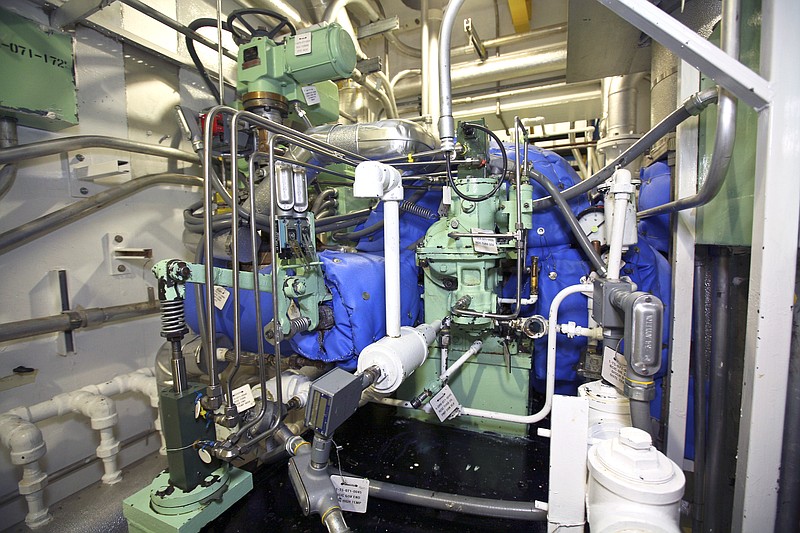Previous NRC "red" findingsJuly 1, 2001 - At Indian Point Nuclear Plant in Buchanan, N.Y., workers and officials did not identify and correct stress corrosion cracking in the steam generator tubes of its Unit 2 reactor.Feb. 28, 2002 - Point Beach Nuclear Plant on Lake Michigan north of Two Rivers, Wis., identified a potential failure of the auxiliary cooling feedwater pumps due to operator actions specified in plant procedures.Aug. 9, 2002 - Davis-Besse Nuclear Plant near Toledo, Ohio, failed to properly implement a boric acid control which allowed reactor coolant system pressure leakage to go undetected for a prolonged period of time. Davis-Besse was shut down for two years for repairs and upgrades.March 24, 2003 - Point Beach Nuclear Plant in Wisconsin for Unit 2 for inadequacies in the plant owner's design process and the implementation of that process, including design requirements and safety evaluations.Source: U.S. Nuclear Regulatory Commission
TVA may have to spend more than $10 million for an intensive set of nuclear regulatory inspections at the utility's Browns Ferry Nuclear Plant.
The inspections come on the heels of its recent "red" inspection rating, the worst level given by the Nuclear Regulatory Commission before a plant is shut down entirely.
Ray Golden, spokesman for TVA's nuclear operations, said the utility is still working on a budget to cover the preparatory and support work for the stepped-up NRC inspections planned at the plant beginning in September. TVA also must pay for the NRC inspectors' time, which could add up to more than $800,000, NRC officials said.
"I'm going to guess it's going to be more than $10 million," Golden said Tuesday after attending a meeting between TVA and NRC in Atlanta.
The two groups met to discuss the planned volley of inspections designed to get Browns Ferry out of the "red" column of NRC's ratings. The red rating is issued when NRC believes a plant has issues of "high safety significance." Plants with ratings worse than "red" are shut down by NRC order.
Among the nation's 104 nuclear reactors, only four besides Browns Ferry have ever been given "red' ratings, and a U.S. reactor has never been shut down by NRC, according to authorities.
At Browns Ferry, near Athens, Ala., "there was a performance deficiency ... and missed opportunities" for safety testing, NRC Regional Administrator Victor McCree told TVA officials. The "missed" safety testing opportunities meant TVA was unaware for 18 months that a key valve on a reactor cooling system was inoperable.
The bad valve came to light on Oct. 23 as TVA tried to shut down the Unit 1 reactor for refueling. To overcome the problem, TVA used another cooling water line that was supposed to be dedicated strictly to fire safety -- a fire-protection design put in after a 1975 fire at the plant damaged reactor control cables.
The 1975 fire was started by a worker using a candle to search for air leaks, according to TVA and NRC reports.
Paying for assurance
Rick Croteau, director of NRC's division of reactor projects, said NRC so far has budgeted 3,000 manhours to the Browns Ferry project.
NRC spokesman Joey Ledford said NRC's fiscal 2011 hourly inspection rate is $273.
"So, 3,000 hours of inspection would result in a TVA assessment of $819,000" just for the NRC inspection time, Ledford said. "It might take fewer hours; it might take more."
The amount does not take into account what TVA will spend to prepare for and support the inspections, he said, nor does it include the costs of any repairs or upgrades that may have to be made as a result of the inspections.
Although the October valve failure created no danger to the public, McCree and Croteau said the incident and other recent problems at Browns Ferry caused regulators to doubt the plant's "safety culture."
So NRC will be giving the plant and its management a thorough going-through in three different sets of team inspections. The first wave will occur Sept. 12-23, when four NRC inspectors will focus on equipment and systems testing programs, Croteau said.
A second round of inspections are planned from October through December with five NRC inspectors looking hard at TVA's maintenance program.
"This is based on historical issues with equipment reliability," Croteau told TVA.
A third series of inspections will be made when TVA tells NRC it has corrected noted problems and is ready for a final review.
Those inspections will focus on maintenance, operations, engineering and corrective action, as well as management oversight and decision making, NRC officials said.
Preston Swafford, chief nuclear officer and executive vice president of TVA's Nuclear Power Group, told NRC that, even during the time when the utility was unsuccessfully appealing its "red" ruling, it already had dedicated a full team toward NRC concerns.
The team includes 15 to 20 TVA executives as well as contractor support numbering 20 to 80 people, he said.
"Even though for the past several months we've had a few differences of opinion on some things, we understand where you're at, and we have not wasted time," Swafford said. "We've already been improving a number of things at the plant in the past several years, but this is an opportunity to significantly accelerate that pace, and we've got the full support of the CEO and TVA directors."
Glenn Carroll, an activist with Nuclear Watch in Atlanta, attended the meeting to chide NRC for not having the meeting in Alabama, near the Browns Ferry Nuclear Plant.
"There are people there who called me to come because they couldn't get to Atlanta," she said.
McCree and Croteau said at least some of the future public meetings about the inspections and their findings will be in Alabama.

